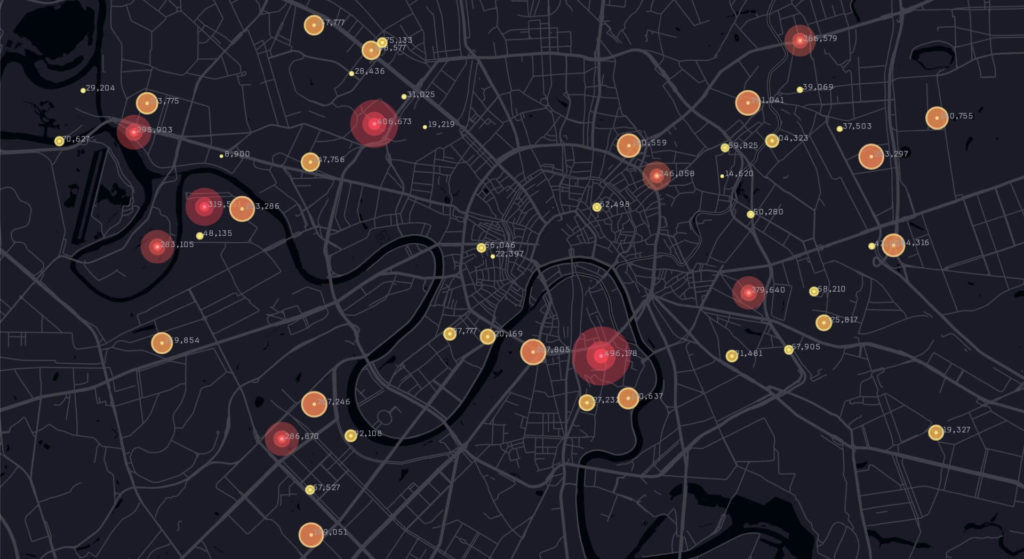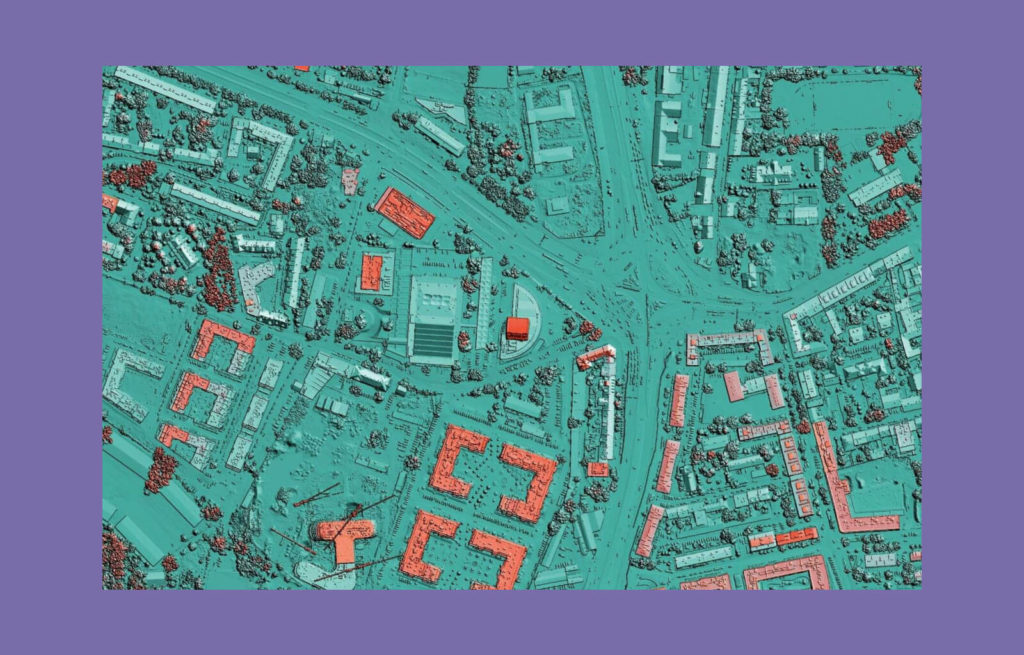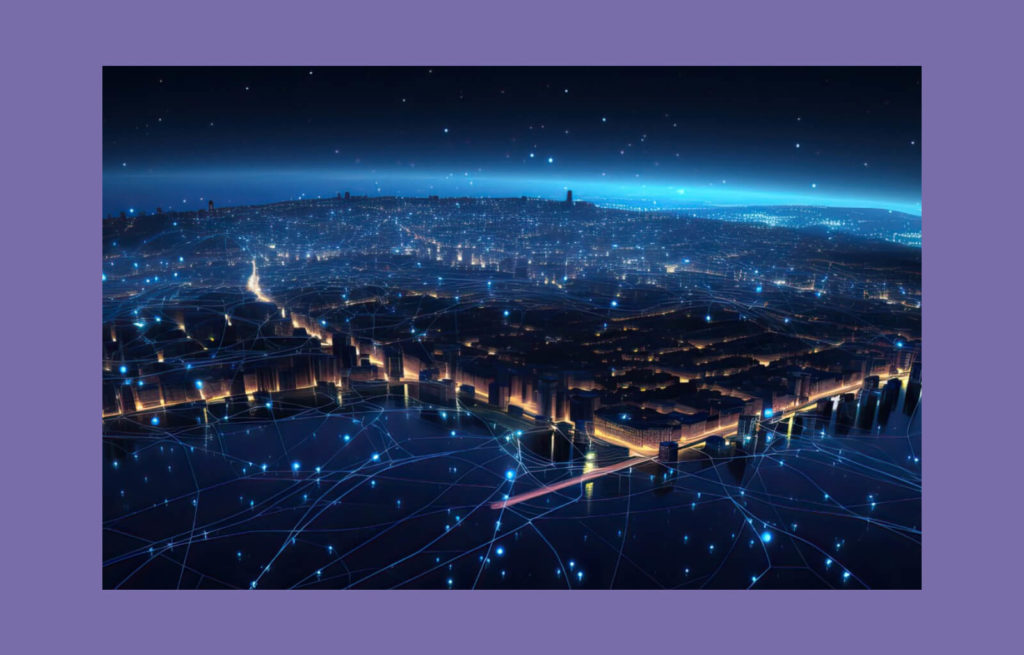A peek at geospatial innovations for Cities of the Future with Jaroslaw Marciniak
The Geovation Awards are at the forefront of geospatial innovations. Their goal is to celebrate and promote novel solutions that help communities, shape landscapes and empower the protection of the planet. With the initiative growing significantly each year, we are excited to yet again share insights from the competition. In this interview with our Director of Geospatial Services – Jaroslaw Marciniak, we talk about him being a judge for the second time in a row and assessing a new category. We also delve into the latest technologies, geospatial innovations, and major trends that stood out amongst the competition entries.
Can you share your thoughts and experiences from this year’s Geovation competition?
It’s clear to me that the competition is constantly changing and growing. There are no major revolutions in it, but it is definitely evolving. Every year, it becomes more and more international, with projects and submissions coming in from many diverse places.
What’s important, from my perspective, is that this year I intentionally asked the organisers if I could judge in a different category from last time. And just as last year I judged in an area with solutions created rather for nature and sustainability, this year I focused on Cities of the Future.
In this category, I expected the submissions to showcase concepts and geospatial innovations intended to help cities be more progressive and modern. Yet, a large number of the entries offered interesting ideas for the “here and now”, mainly focusing on two aspects: urban planning and dealing with citizens’ issues.
My main observation about the competition itself, and at the same time a thing that is very gratifying, is the high increase in the number of registered projects. This year saw about 40% more submissions. And it was certainly noticeable also in my field of evaluation.
Apart from the contest growth and the number of entries, have you noticed any other changes compared to the previous edition?
I got the impression that there were fewer entries from large companies and corporations. The competition focused more on new, often smaller firms. However, they were not just start-ups. There were still submissions with geospatial innovations from various non-profit organisations and both governmental and non-governmental institutions. Nevertheless, unlike last year, I barely saw any entries from large corporations such as ESRI or Hexagon. In my category and among the nominees who appeared on the shortlists of all categories, I recall only one such project.
We can wonder why this might be. On the one hand, of course, this competition is intended to provide more recognition and give a boost to companies and organisations that want to or have already entered the market and are doing something truly innovative. And large corporations often don’t need that. On the other hand, these big companies with extensive R&D departments, such as Google, Microsoft or strictly GIS corporations like the previously mentioned ESRI or Hexagon, are creating lots of innovative solutions. Nevertheless, this year, I haven’t seen anything from them.
Circling back to the new category, do you have any more highlights or insights worth sharing about the Cities of the Future section?
Submissions in this category were characterised by their focus on two separate audiences – citizens, who are end-users taking some kind of action, or city officials, who can use certain information to improve planning or management. Importantly, these two target groups may have different needs and definitely have unequal access to data. Typically, only the local administration has extensive access to various types of data, especially those that are not publicly available. It is difficult for average citizens to get some information. So, this is an important issue that applicants must consider when preparing their solutions.
Another noticeable thing in this category is how the perception of what is innovative varies from location to location. For example, one of the submissions from Central America presented a solution that gave the regular citizen a digital tool – a web portal for dealing with various civic matters and reporting issues to local officials. The solution was deployed in several cities and had impressive results. In some places, the increase in the number of requests and proposals was as high as 300% because people started using the app and no longer had to go to the city hall or other offices. So, from a local or regional perspective, this is an innovation. However, it is safe to say that in other regions or countries, such solutions are already considered standard. This exemplifies how, depending on the location, different things can be seen as innovations.
What noteworthy technology trends appeared in the Geovation entries?
Of course, a great deal of the competition submissions talked about AI. It is a significant trend right now. Many applications – I think even about 90% – mentioned the use of this technology in their summaries. It is fascinating how most of the submissions firmly emphasised using artificial intelligence, even though it was usually on such a high level. The submissions tended not to have very detailed descriptions of what innovative algorithms or AI models were used. Usually, the only thing mentioned was that artificial intelligence was also used in the solution.
I feel that in terms of AI, we are now at a point where applicants think that they have to mention it; otherwise, they won’t be seen as innovative. Even when, the use of AI in a solution is not at all its main feature. I consider this an interesting insight, showing how big of a trend AI is right now.
In terms of geospatial innovations, were there any other interesting technological solutions besides AI?
Regarding other noteworthy technological aspects, satellite imagery played a greater role than last year. Entries in the competition often mentioned utilising them to create certain solutions. So, the trend related to earth observation was also strong.
A significant and recurring technological trend was also seen in the emphasis on integrating and harmonising data from different sources. We can also call this big data, but not necessarily in the sense of huge volumes of data, but rather the use of a vast number of diverse data sources, that also need to be integrated.
Datasets can, of course, come from several institutions and urban planning databases, as well as be taken from satellite imagery, both optical and hyperspectral, to extract as much additional information as possible. In this regard, competition projects also often featured examples that used IoT and various types of sensors to gather information. So, leveraging tools and solutions with the ability to collect data from multiple sources or sensors, and match and harmonise them also seems crucial. Especially in this category, there was a strong focus on data availability that ultimately gives city decision-makers a chance to make better, more data-driven choices.

Can you tell us more about specific submissions that you found particularly interesting or memorable?
Particularly memorable to me was the submission of a company that develops solutions for monitoring water cleanliness and uses quasi-natural sensors containing algae to do so. The project involves placing such detectors in selected aquatic areas within a city and later analysing data on water pollution collected, thanks to the algae capturing dirt and collecting contamination.
What’s more, this company also mentioned that their next concept is to create construction materials, such as bricks, containing the very algae that can absorb some of the pollution in the surrounding area. The use case they gave was, for example, the construction of tunnels for new subway lines, where the contamination and pollution or humidity concentrations are really high. This was the kind of project that struck me as particularly original and relevant to urban development.
In addition, there were also many interesting applications for the “here and now.” One of them, for example, addressed the detection of urban heat islands and hot spots. The idea was to identify and monitor the areas and surfaces that heat up the most in the city, in order to prevent this and improve the planning of urban spaces.
Another project helping with current issues involved monitoring heat loss. This was a solution for assessing the thermal efficiency of buildings – that is, to determine which places need to be insulated and where there are the greatest losses. Importantly, this tool enabled quick assessments on a massive scale. This means that instead of focusing on individual buildings, it could examine entire streets. That is another example of a fine tool that can improve the comfort of citizens.
And what was the entry that impressed you the most and which you rated the best?
The submission that caught my eye and to which I also gave the highest marks was the one showing an attempt to structure transportation drone flights. This project involved making a scheme for drone aerial highway tunnels. So that commercial or delivery drones would move in a precise pattern, e.g., in the proper order, one after the other and on the right routes – always in a structured way. This is a fascinating idea that, with its innovative approach, may even bring solutions from science fiction films to mind.
However, I also really liked the project using algae that I mentioned earlier. Although I didn’t rate it the highest overall, in one of the criteria – “How genuinely innovative are the ideas and solutions?”, I also gave this project the top marks. So again, this idea of using bio elements to monitor and combat pollution in cities is also very clever and innovative.
Amid all these submissions and showcased geospatial innovations, has there been any other technology or trend that you think could play a significant role in the future of urban design?
I think a valuable solution for the future, especially in such a category as Cities of the Future, is the creation of digital twins for urban areas. Some of the submissions talked about using these solutions at the scale of entire cities, but the accuracy of the data and results in such cases was often lower. Nevertheless, there were also entries employing this technology for specific urban areas, for which the accuracy was already much higher.
Therefore, I think that having such a digital twin with every building, infrastructure element or terrain model captured, can be immensely helpful for cities. Such solutions provide the opportunity to carry out, at any time, different kinds of scenarios that can be useful in city planning or management. We are not yet at the stage where this would be a leading trend, but it has great potential. And I am glad that we can also see this as a progressive topic in the Geovation entries.
If you want to learn how we can help you leverage various geospatial innovations to achieve better results for your organisation, visit our offering page or contact our expert directly via the form below.
About the author
CONTACT
Get in touch to check how we could support your geospatial project
OUR BLOG




